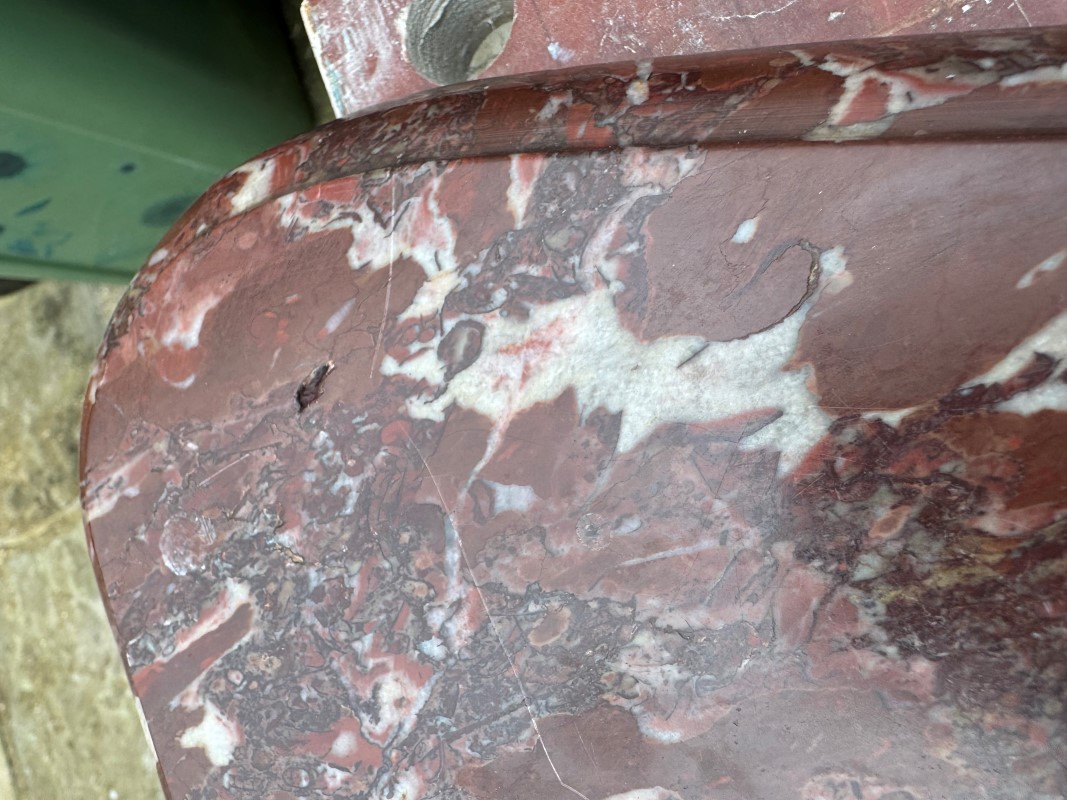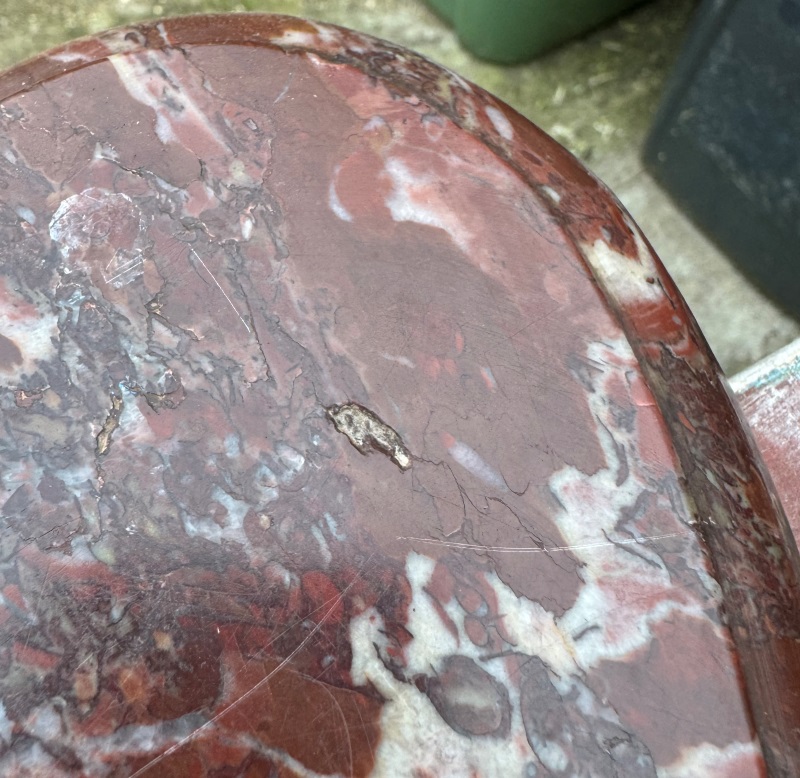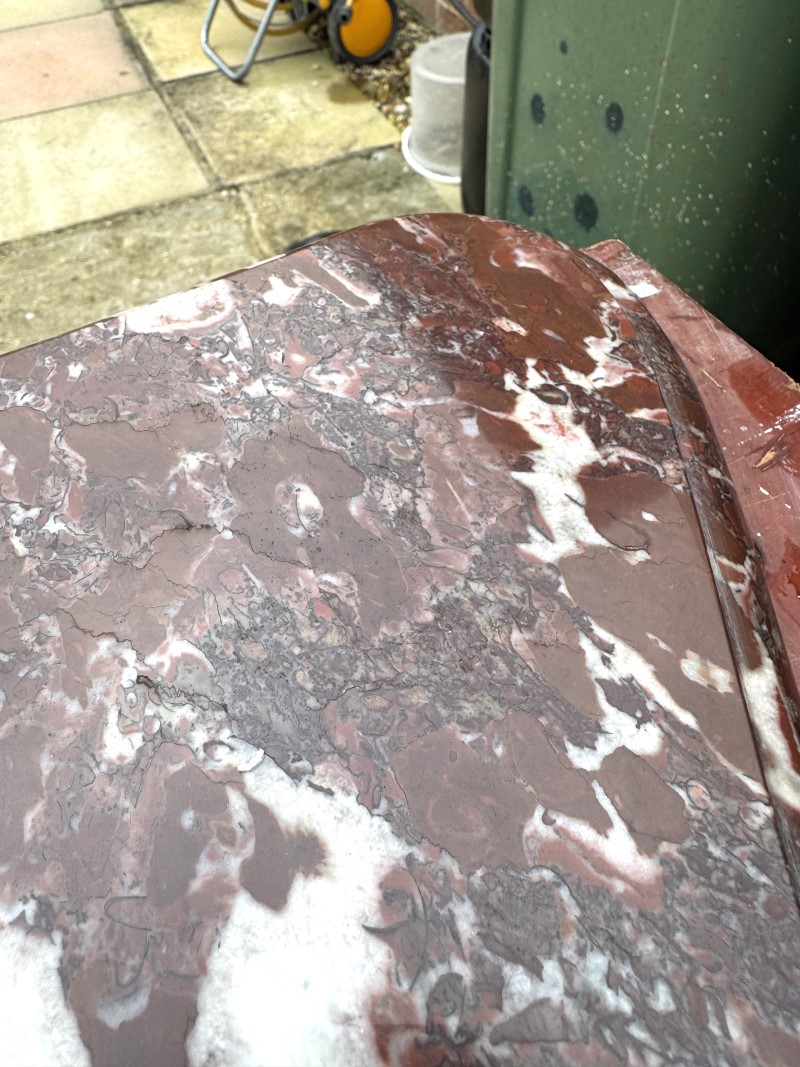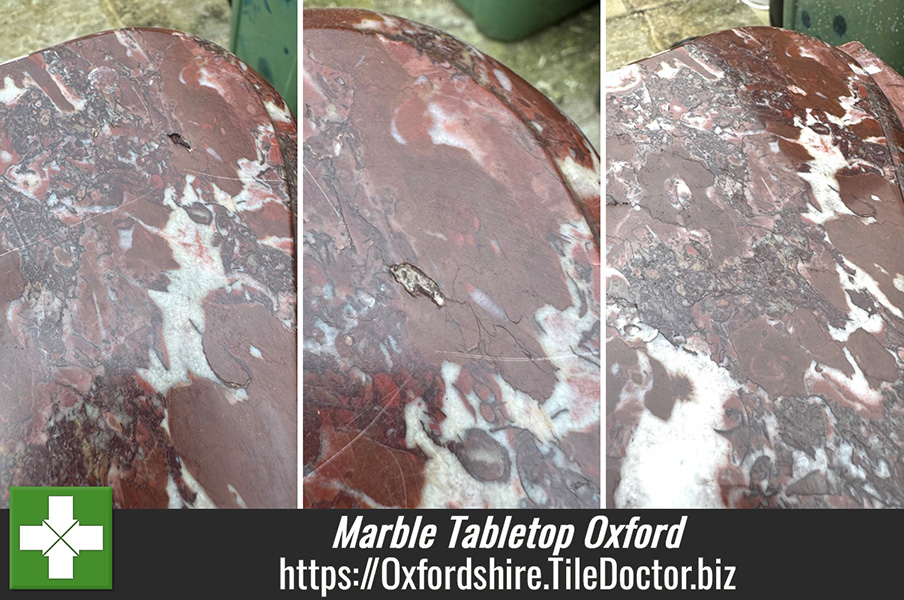Using Handheld Tile Doctor Burnishing Blocks to Repair a Chipped Marble Table in Oxford
Earlier this year I worked on a neglected Marble table and a client from Oxford saw that and wondered if there was anything I could do to repair a similar table made from marble.

I popped over to look at the table and could see there were some light scratches but more significantly there was a chip in the surface where the client had dropped something heavy on the tabletop. Confident I could help I agreed to renovate the table which included filling the chip, polishing to remove the scratches and then applying a sealer to protect it going forward.
Cleaning and Repairing a Marble Tabletop
The first task was to tackle the chip which began by wiping the marble surface down with thinners to clean of any grease and dirt etc. Next, I mixed up some specialist paint to match the dark red colour of the table and applied it to the damaged area. The hole was then filled with a clear resin building up thin layers until the hole was slightly overfilled.
The next step was to rub down the repaired area with coarse hand-held diamond blocks of different grits to remove excess resin until it was flat. This was followed by polishing the whole Marble tabletop with a set of 6-inch diamond burnishing pads. This action brings up the natural polish on the marble removing the light scratches and helping the filled area blend in.
I usually use the larger 17-inch version of these pads to renovate stone floors, and the 6-inch pads are no different except you have to use them with a hand-held buffer. The process is the same, you start with the 400-grit using water for lubrication and apply the pad to the whole table. Then the slurry is rinsed off and the action repeated with the 800 and 1500-grit pads. The last pad is 3000-grit and is applied with a little water sprayed onto the surface. This last pad has the added advantage of leaving the marble dry so you can move quickly onto sealing.

Sealing a Polished Marble Tabletop
To seal the Marble table a couple of coats of Tile Doctor Colour Grow were applied. This is an impregnating sealer that soaks into the stone, occupying the pores in the marble and ensuring dirt remains on the surface where it can be easily wiped away. Tile Doctor Colour Grow as its name suggests contains a colour enhancing formula which is ideal for improving the appearance of a colourful table like this one.
Once the sealer had dried, the stone was given a light buff with a 6-inch white buffing pad to bring up the finish.
For aftercare of stone countertops and tables I recommend the use of Tile Doctor Stone Patina Spray. This is a neutral PH spray cleaner that helps to maintain the shine on a polished stone.

Source: Professional Stone Table Restoration Services and Solutions near Oxford
